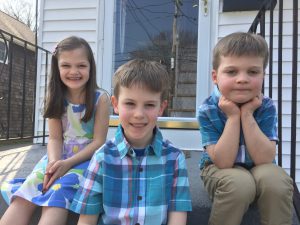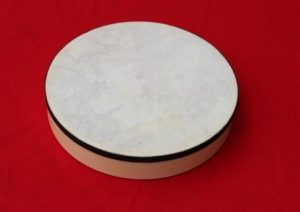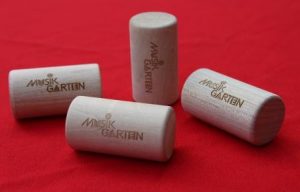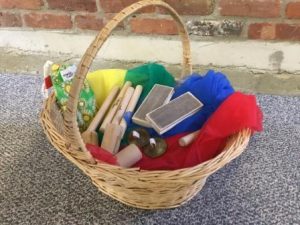While the stay-at-home orders for most states are beginning to expire, and staged reopening of places of business are giving us a small respite from being homebound, nearly all schools across the United States remain closed for the remainder of the school year. That, coupled with the beginning of summer break, challenges parents with having to manage anxious children at home. As children’s music teachers and parents alike have known forever, music sooths and relaxes stressed out kids. We have touched in past posts about how many children’s music studio owners are providing virtual music classes online, these classes and additional activities associated with them can only take up some many hours in a day or week. Music professionals and children’s teachers will agree that just about any activity that exposes children to music is a good thing. Here are a few fun ideas for families to do at home that will expand children’s musical exposure:
- Make a guitar out of a cereal box – Cereal is a staple food for many households with children. Whether its Lucky Charms, Rice Crispies, or Captain Crunch, many lids love to eat it all day long. Those empty boxes can be used for a fun arts and crafts activity that also teaches about music. Building a simple guitar out of a cereal box have many benefits, from tactile activity to learning to repurpose materials. No matter how good it ends up sounding, guitars can teach children about rhythm and scales.
- Musical spoon activities – Many of us imagine an old man from Appalachia on his front porch slapping a pair of spoons between his knee and hand, but the playing of spoons has actually been around since before written history. The ancient Egyptians, Greeks, and Romans all played spoons and a variation of them called rattle bones or rhythm bones. While this form of concussion idiophone can be hard to master, all it takes is an old spoon and other kitchen objects to explore a variety of musical sounds. Rubbing the spoon against an old can, kitchen grater, hitting a pot, etc, provides many different sounds. Children will have fun composing arrangements of the various sounds, and possibly even writing lyrics. Just keep in mind that this is not an activity that should be encouraged while you are on a conference call working from home!
- Draw what you hear – This activity combines several forms of art with creativity. Start with a blank sheet of paper and pencils, markers, or crayons. Select a piece of music, whether it’s a Classical instrumental or a Rock song with lyrics, ask your child to draw what they are hearing. If they are having trouble, give them some ideas or demonstrate. For example, if the music is a slow Blues song, they may use long loping lines in a darker, melancholy color. For a faster, livelier genre such as Calypso, they may choose to draw shorter, sharper angles in brighter colors. Some children may decide to draw what it literally being sung about in the lyrics. There is no right or wrong way for them to draw what they think or feel when listening to the music.
- Fortune Teller or “Chatter Box” Game – If you are of a certain age, you may remember the folding paper game that allows you to make selections while manipulating the origami. Children will love folding and decorating the paper, and the resulting activity can be applied to a limitless amount of musical games. Write different genres of music inside the flaps, and play examples as each of them are selected. Another idea is to put common words on each flap and write a song together that includes all of the words selected after a number of rounds. Ask older children to think of their own musical game that utilizes the “chatter box.”
- Freeze dance – A variation of musical chairs, this one is fun and simple while burning off some energy at the same time. Play a song on an audio player and ask everyone begin to dance however they feel. When they least expect it, hit pause or yell freeze and see what funny positions everyone winds up in. Like musical chairs, you can eliminate anyone who is still moving when the music freezes, and/or see how long each can hold their positions. Let members of the family take turns in selecting the music and hitting the pause button. Add some toys, children’s instruments, or ordinary household items as props to add even more variety.
Children’s music studio owners and teachers will tell parents that in addition to a more formal music education, just about any other exposure to music or musical activities will expand musical growth. At a time when parents are looking for fun activities for children at home, these simple suggestions can educate, entertain, and exercise at the very same time.










